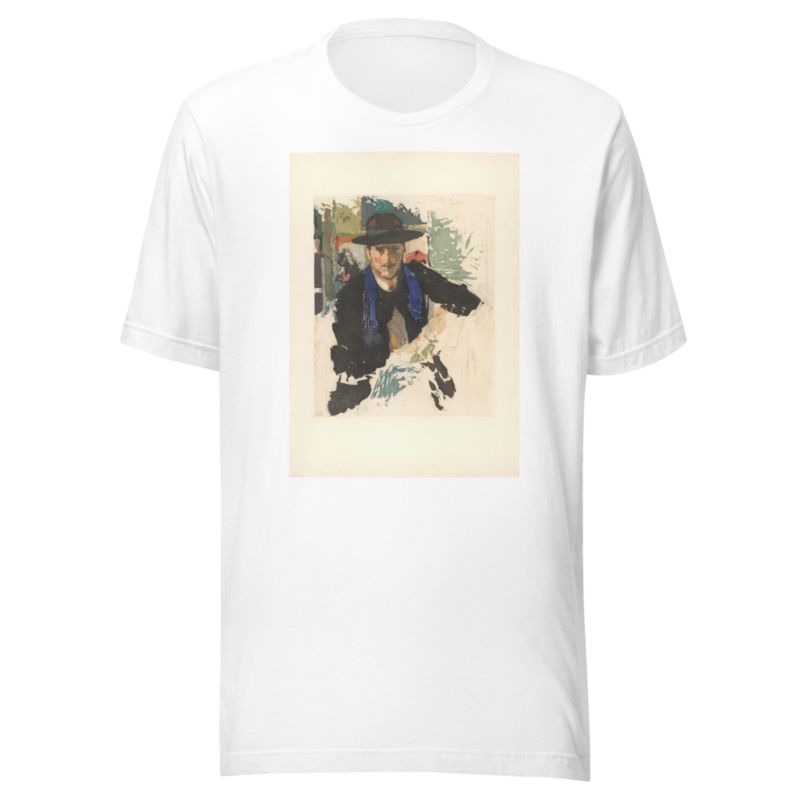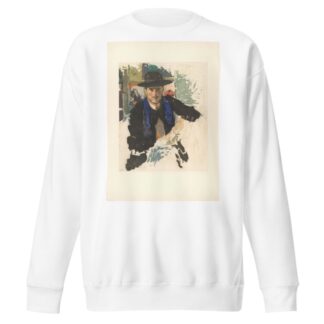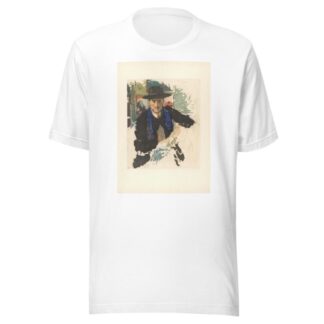Description
Portrait de Rik Wouters by Armand Apol printed on a T-Shirt
About the T-Shirt
Regular fit
Standard length, the fabric easily gives into movement
Casual wear
A classic, everyday option loved by our customers
Side-seamed
Constructed by sewing two parts together, creating a fitted look
The Unisex Staple T-Shirt feels soft and light with just the right amount of stretch. It’s comfortable and flattering for all. We can’t compliment this shirt enough–it’s one of our crowd favorites, and it’s sure to be your next favorite too!
- Solid colors are 100% Airlume combed and ring-spun cotton
- Ash color is 99% combed and ring-spun cotton, 1% polyester
- Heather colors are 52% combed and ring-spun cotton, 48% polyester
- Athletic and Black Heather are 90% combed and ring-spun cotton, 10% polyester
- Heather Prism colors are 99% combed and ring-spun cotton, 1% polyester
- Fabric weight: 4.2 oz./yd.² (142 g/m²)
- Pre-shrunk fabric
- 30 singles
- Side-seamed construction
- Tear-away label
- Shoulder-to-shoulder taping
- Blank product sourced from Nicaragua, Mexico, Honduras, or the US
Armand Apol (1879-1950)
Armand-Adrien-Marie Apol was a Belgian painter, etcher and lithographer of Post-Impressionism.
From 1891 to 1901, Armand Apol studied at the Art Academy of Brussels, from Constant Montald, among others. In 1901, he joined the artists’ society Le Sillon, whose fellow members included Willem Paerels, Emile Thysebaert, Louis Thevenet, Georges Van Zevenberghen, Louise Brohée, Arthur Navez and J. Tordeur.
During World War I, he was a prisoner of war in Germany and after the war he lived for a time in Switzerland. In 1918, he had an individual exhibition there in Geneva at the Galerie Moos.
Armand Apol painted landscapes, old city corners as well as seascapes in impressionist-realist style.
Apol often worked in old towns and villages like Bruges, Mechelen, Lissewege. He also worked along the North Sea beach and port cities painting sea, fishing boats and harbour business.
Apol was also graphic artist (etchings and lithographs) who, in addition to his own compositions, also executed copies after works by other masters, including those by Valerius De Saedeleer. Apol quickly grew into a commercially successful artist, promoting his work via group salons and individual exhibitions.






Reviews
There are no reviews yet.